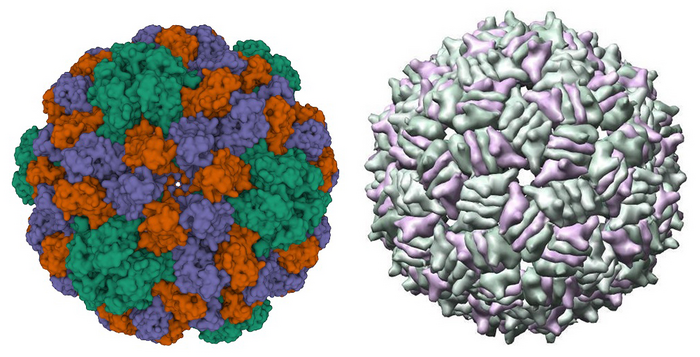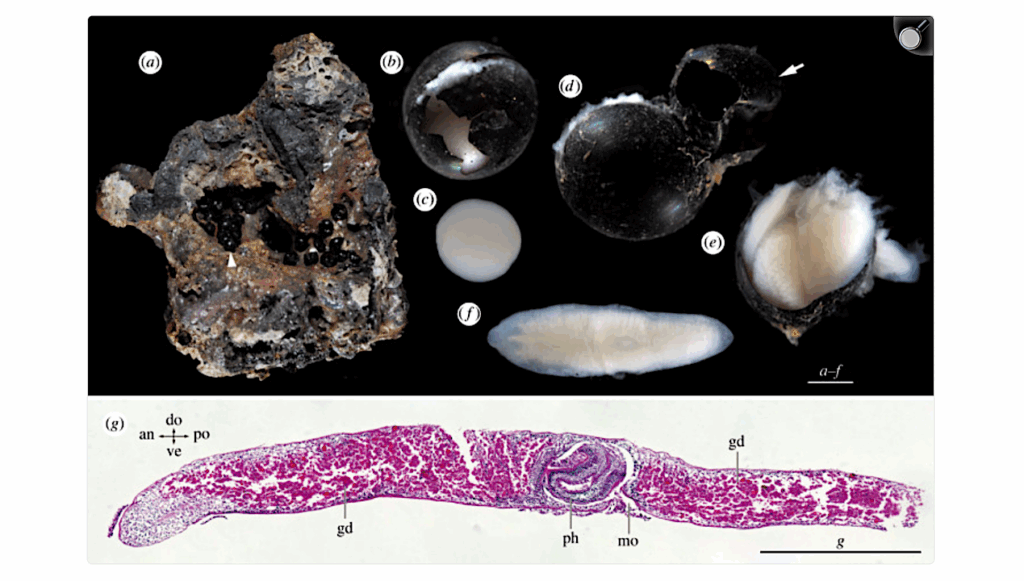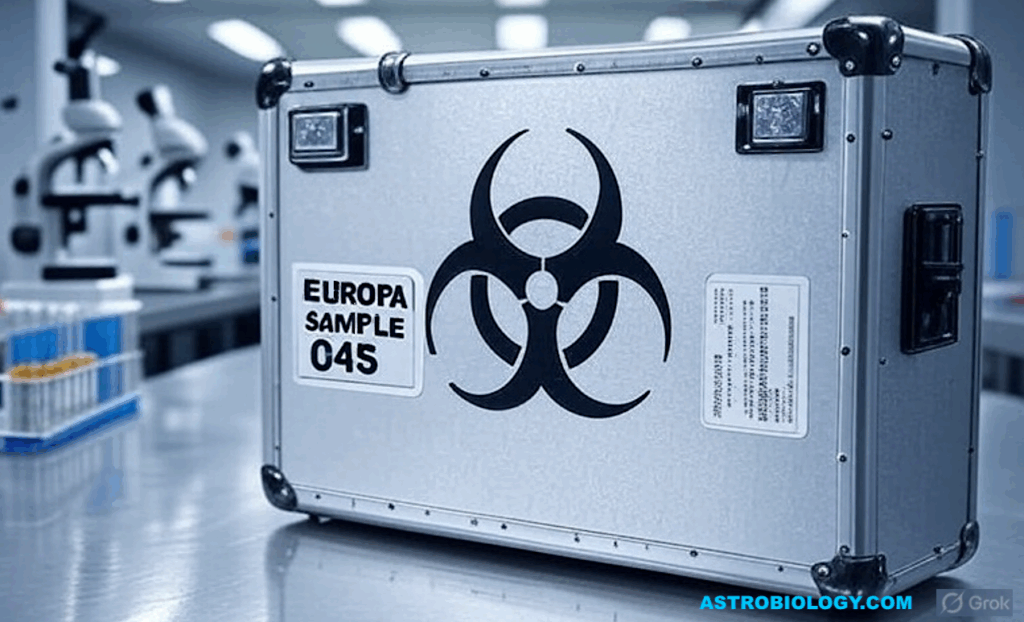Distantly Related Viruses Share Self-assembly Mechanism

How do the hundreds of individual pieces that make up viruses assemble into shapes capable of spreading disease from cell to cell?
Solving the mystery of self-assembly can pave the way for engineering advancements like molecules or robots that put themselves together. It could also contribute to more efficient packaging, automated delivery and targeted design of medicine in our fight against viruses that cause colds, diarrhea, liver cancer and polio.
“If we understand the physical rules of how viruses assemble, then we can try to make them form incorrect structures to hinder their spread,” said Rees Garmann, a chemist at San Diego State University and lead author of a new paper that fills in a piece of the puzzle.
Garmann, along with two SDSU graduate students and collaborators at Harvard and UCLA, concluded that two distantly related RNA viruses — one that infects bacteria and one that infects plants — perform this chemical choreography in strikingly similar ways.
In both, and potentially other, viruses, the protein components perfectly pattern into pentagons and hexagons that form a symmetrical icosahedral shell, one of the most prevalent shapes among all viruses, thanks to a scaffold provided by a looped and folded strand of RNA.
Similar to how a snowflake requires a couple of molecules of frigid water to surround a dust particle before crystallizing, a virus’s jungle-gym-like sphere of proteins coalesces quickly only after a few proteins loosely attach to the RNA.
“Without the interactions between the proteins and the RNA that my students, Fernando Vasquez and Daniel Villareal, were studying, it would take a very long time — weeks, months, maybe never — for this virus to assemble,” Garmann said.
Yet the whole assembly process, which Garmann and his collaborators captured in detailed videos using an innovative iSCAT (interferometric scattering) microscope that records individual viruses, takes mere minutes.
“The iSCAT technique opened a new window onto virus self-assembly,” said Vinothan N. Manoharan, a co-author on the study and the Wagner Family Professor of Chemical Engineering and Professor of Physics at Harvard’s John A. Paulson School of Engineering and Applied Sciences. “Only by seeing individual viruses form could we determine that they don’t all assemble at the same time. That was key to understanding the self-assembly mechanism that the two types of virus share.”
Garmann says their experiments point the way to answering the next big mystery of how viruses ensure accuracy and functionality at all steps along the assembly line.
Knowing more about how viruses assemble is related to the 1950s-era physics paradox of how proteins fold into their proper shapes much faster than if they relied solely on chance encounters — a process estimated to take longer than the billions of years the universe has existed.
One Case Closed, Others Opened
Although the viruses in this study and the virus that causes COVID-19 both have RNA, the researchers say that extending these findings to the bigger, oddball SARS-CoV-2 virus would be premature.
“The hope of our research is to learn about some physical, fundamental interaction that occurs in these model systems,” said Vasquez, a doctoral student in chemistry. “Maybe with more data and time, they can be applied to studying a new virus.”
“Self-assembly — designing components that know how to get together — is totally different from how we build ordinary things,” Garmann said. “As engineers, we have a lot to learn from viruses.”
Single-particle studies of the effects of RNA–protein interactions on the self-assembly of RNA virus particles, Proceedings of the National Academy of Sciences
Astrobiology








